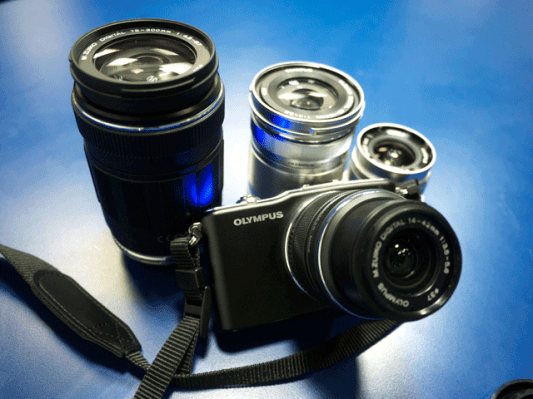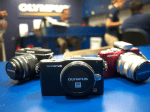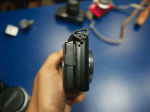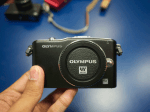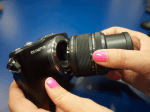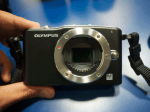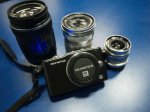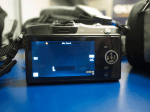Olympus is trying to do with their new E-PM1 PEN Mini camera what other manufacturers already have: bring DSLR power to the masses. It’s their smallest Micro Four Thirds camera to date, and it’s definitely got its proverbial sights set on the mass market — and the fact that it comes in six colors certainly doesn’t hurt. Olympus was kind enough to let me play with an E-PM1 and a variety of lenses at the U.S. Open of all places, and here are a few of my quick impressions.
The body is a bit on the plasticky side, but it fortunately doesn’t feel like it will fall apart at the seams either. Corners had to be cut to keep the price down, and while the body probably could have been a bit sturdier, it feels robust enough to stand up to the rigors of everyday use. The rest of the package was spot on: it performed pretty nicely in most low light situations I found myself in, and the autofocus was nice and snappy.
As something of a novice photographer, I appreciated the simple terms that Olympus has peppered throughout its UI. While being asked to manually change shutter speed on a typical DSLR may elicit a clueless look from an aspiring photographer, Olympus makes it a cakewalk: just change the “Motion Control” setting (complete with self-explanatory icons) to achieve the desired effect. That said, the menu system was a bit confusing at times: after changing the art mode (Olympus’s name for filters) in the menu for example, you couldn’t use the same method to change it. Rather, you press a different button and change art mode from the settings it brings up.
The E-PM1’s iAuto mode is a boon to new users — while photos taken using it seem to err just a bit on the warm side, it reduces the amount of know-how needed to take nice shots. Different art modes also add an extra splash of fun to the PEN Mini, and while every camera has them, personal favorites like the tilt-shifting Diorama mode will help position it as the fun camera to use.
All things considered, I’m really starting to fall for the little guy. The problem with Olympus’ approach is that it’s terribly difficult to strike the right balance: water it down too much and pros won’t pick it up as a smaller alternative, but make it just a bit too complex and casual users won’t take the plunge. While not perfect, the E-PM1 fortunately seems to stick it mostly in that sweet spot. The Olympus E-PM1 is due for a September release, and will set photographers back $499.99.
